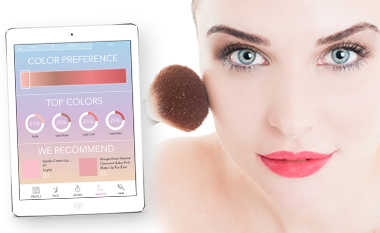Drawing upon on our new and exciting feature, a complimentary highlights report that comes with subscription to our annual Cosmetics & Toiletries USA report, we’ve selected several trends to watch out for as we enter 2016.
- The rise of consumerism and expression of individualism
The beauty industry projects a further rise in consumerism and expression of individualism. The unique needs of consumers are addressed by marketers who offer personalized solutions and custom-made products.
More individualized beauty routines are made possible with applications (apps), such as Beautiful Me—profiled in-depth in our recently published Going Digital: Who’s Who in the World of Beauty Apps—which scans a user’s skin tone and undertone using 500 Facebook photos and makes recommendations on suitable makeup products.
- “Natural” becomes mainstream
It has definitely become more mainstream! Savvy consumers increasingly believe that natural can also be beautiful and deliver efficacy. These consumers pay attention to labels and lean towards products that exclude potentially harmful ingredients. Following this trend, marketers have been increasingly reformulating their products with a higher proportion of truly natural ingredients, finds our Natural Personal Care Global Series. Moreover, some brands include the farm-to-face concept in their practices as seen in skin care brands like Tata Harper, which sources all of its ingredients from a farm in Vermont, and NUDE, which includes natural super foods in its formulations.
- Men’s grooming
Our Cosmetics & Toiletries USA report finds that skin care products for men recorded a colossal 8.6% in 2014, and there are no signs of slowing down in 2015. According to secondary sources, Google searches for men’s styles overtook searches for women’s styles by 6% in 2015, with “man buns” being the #1 query. This indicates that men are becoming more aware of the way they look and feel—but will shaving and hair gels suffer from it in 2016?
- Beauty retailing and technology
There’s a trend in retailing to bridge the gap between beauty and technology. In this digital age, beauty and technology come together to bring about convenience and ease. Consumers are able to make purchases anytime, anywhere, and use their phones to browse products, read reviews and ingredients, and compare product pricing and availability. Kline’s report on Beauty Retailing through the Internet: U.S. Channel Analysis and Opportunities delves into this very topic of the role of the Internet and digital technology in the beauty industry.
- Asian retailers heading west
Asia continues to be a topic of discussion in various spheres. Asian consumers take their skin care and makeup seriously. We have seen a rise in skin care products that promote “dewy and beautiful skin,” as well as innovative, multi-benefit products that are used for various applications. In addition, independent Asian companies continue to make headlines in the West. In 2015, we saw the acquisition of Singapore-based e-tailer Luxola by Sephora, as well as the opening of the first Peach & Lily brick-and-mortar store in Macy’s in the United States.
- Innovation drives the beauty and personal care industry
In this world of intense competition, marketers and retailers alike will need to constantly innovate to keep up with the changing needs of consumers.
Innovation will be driven by:
- Small, niche, independent brands that are pioneers in this field, offering innovative products, packaging, and marketing to appeal to the millennials.
- Leading retailers who come up with engagement tactics by offering tips and advice to help consumers make the right choice for their products.
- At-home beauty devices that allow consumers to address specific concerns in a cost-effective and convenient way.

